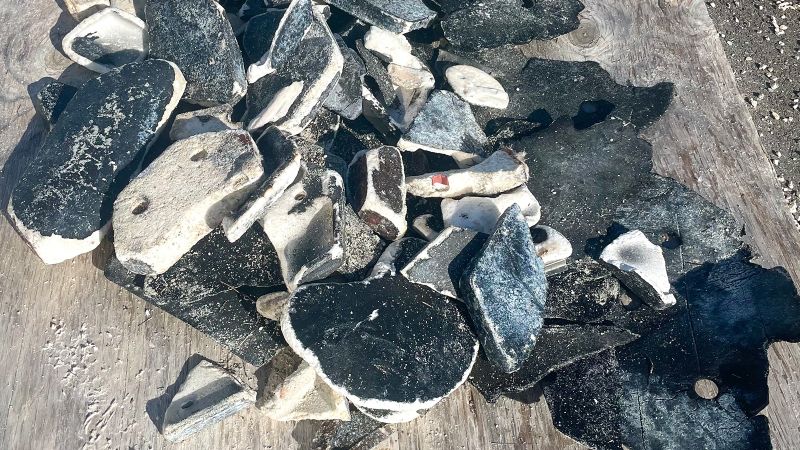On January 16, a stunning and alarming event unfolded across the tropical islands southeast of Florida, in the Turks and Caicos archipelago. As thousands of visitors were enjoying the distinct balmy weather typical of this time of year, an unexpected event took place just after sunset. A SpaceX Starship launch system’s upper stage, considered the most powerful rocket ever constructed, disintegrated over the North Atlantic Ocean, resulting in a magnificent yet terrifying cloud of flames and debris lighting up the evening sky. In the wake of this explosion, onlookers found themselves captivated by the sight while simultaneously grappling with a growing sense of dread. As the orange and white fireball pierced the sky, many captured the moment and shared it across various social media platforms.
Residents in the area, such as Lori Kaine from Providenciales, were initially perplexed by the spectacle, mistaking it for a plane explosion. The noise that accompanied this stunning phenomenon was deafening. Kaine recounted feeling the ground reverberate and her dogs panicking in response. It took her a while to process what had transpired, and it wasn’t until she began receiving messages that she learned about the catastrophic failure of the Starship.
In the immediate aftermath, the debris fallout began to manifest in the region. Kaine discovered pieces of the spacecraft scattered throughout her property and along local roadways, with many finding their way to the beaches nearby. Residents expressed astonishment and concern as they witnessed large fragments of the spacecraft washed ashore. Although there were no reported injuries, the event raised significant concerns regarding safety and environmental implications.
SpaceX’s test flights, including this unfortunate incident, have drawn criticism, especially given the choice to conduct these flights over populated areas. The Federal Aviation Administration (FAA) quickly responded by locking down airspace near the Turks and Caicos, indicating the severity of the situation. An investigation was initiated as debris from the launch reached the ground, with communities coming together to collect remnants from the turbulent situation. Reports indicated widespread debris across the islands, including a specific instance of property damage where debris impacted a vehicle in South Caicos.
Residents’ frustrations intensified concerning SpaceX’s reaction to the incident. A resident, Amos Luker, who operates a car rental agency in Providenciales, expressed disappointment over the minimal communication from SpaceX regarding the risks and potential hazards posed by the tumbling pieces of the spacecraft. As residents took initiative to collect debris, they grappled with concerns about the possible presence of hazardous materials among the wreckage. The situation raised essential questions about the process of risk assessment and oversight associated with launching experimental space vehicles so close to human habitats.
In the wake of the chaos, local officials started to formulate plans for a coordinated cleanup, with the Turks and Caicos Reef Fund leading efforts to document debris locations across the islands. As some items began to show up on online marketplaces, whether as souvenirs or items for sale, the debate about ownership emerged. While some residents were motivated to accumulate pieces of the debris, authorities reminded them that under international treaties, such remnants technically belonged to SpaceX, raising questions about legal ownership.
Ultimately, this accident has served as a reminder of the risks inherent with space travel, especially in areas inhabited by people. The conversation surrounding SpaceX’s launch strategies, disaster preparedness, and the profound effects of space exploration on the environment are more pressing than ever. As recovery efforts continue, residents like Lori Kaine are left pondering the implications of these powerful technological ventures, their impact on everyday life, and the extent to which companies like SpaceX are accountable for their missions and their aftermath.
As locals await clearer guidelines and further action from SpaceX, the situation illuminates broader questions about the balance between innovation and public safety in the pursuit of space exploration.












